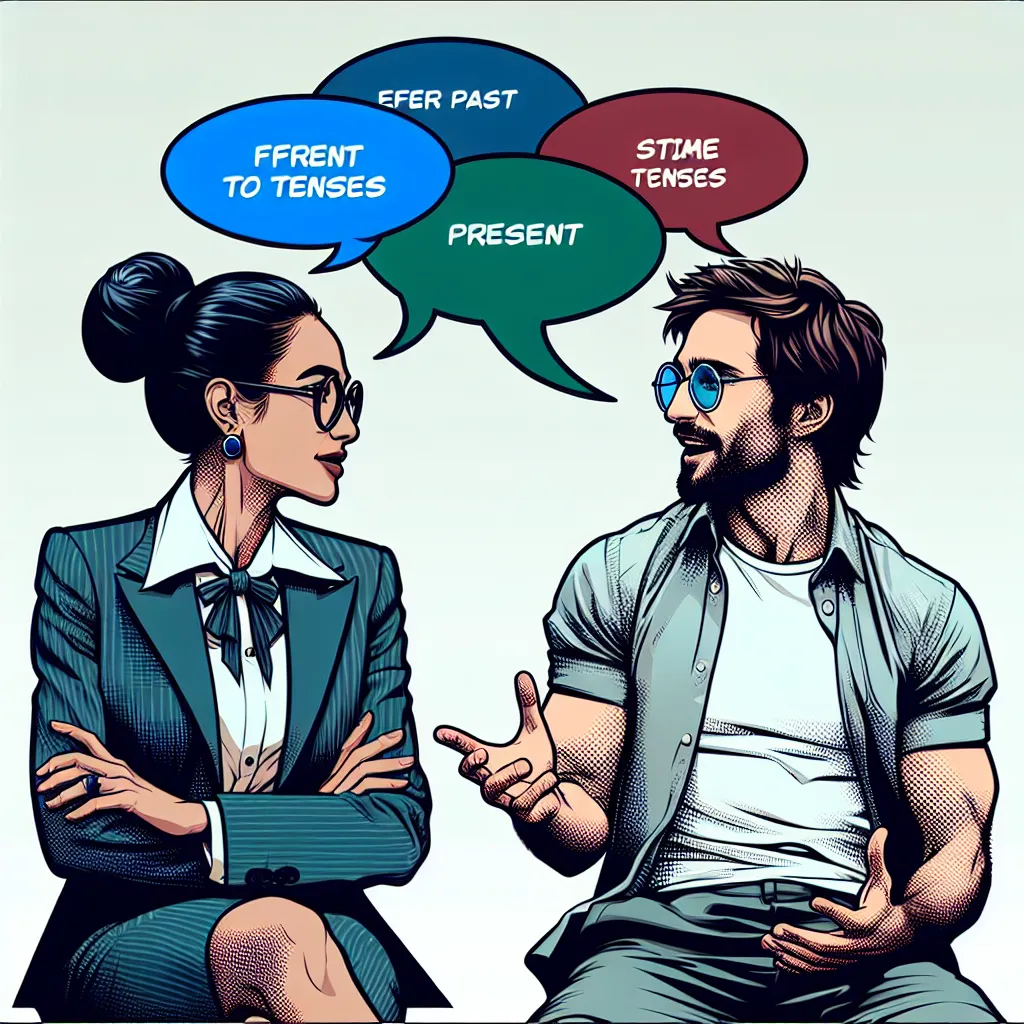Storytelling is an art that relies heavily on the effective use of tenses to create vivid and engaging narratives. Whether you’re a budding writer or an English language learner, mastering tenses in storytelling can significantly enhance your ability to craft compelling tales. In this comprehensive guide, we’ll explore some valuable tips for perfecting your use of tenses in storytelling, helping you bring your stories to life and captivate your readers.
 Mastering Tenses in Storytelling
Mastering Tenses in Storytelling
Understanding the Importance of Tenses in Storytelling
Before diving into specific tips, it’s crucial to understand why tenses are so important in storytelling. Tenses help establish the timeline of events, create atmosphere, and guide the reader through the narrative. They can create tension, suspense, and even influence the reader’s emotional response to the story.
The Role of Tenses in Narrative Structure
Tenses play a vital role in shaping the narrative structure of your story. They help to:
- Establish the time frame of events
- Create a sense of progression or regression
- Highlight important moments or turning points
- Differentiate between background information and main events
Understanding how tenses contribute to these elements will help you make more informed choices in your writing.
Tips for Mastering Tenses in Storytelling
Now, let’s explore some practical tips to help you master the use of tenses in your storytelling.
1. Choose a Dominant Tense
One of the most fundamental decisions you’ll make is choosing the dominant tense for your story. This is typically either past tense or present tense.
- Past tense is traditional and often feels more natural for storytelling: “She walked into the room and saw the letter on the table.”
- Present tense can create a sense of immediacy and urgency: “She walks into the room and sees the letter on the table.”
Whichever you choose, be consistent throughout your narrative unless you have a specific reason to switch.
2. Use Tense Shifts Purposefully
While consistency is key, strategic tense shifts can be powerful tools in storytelling. They can be used to:
- Provide background information: “She had always loved the ocean” (past perfect) in a story primarily told in simple past.
- Create flashbacks or flash-forwards: “Tomorrow, she would regret her decision” (future in the past) in a past tense narrative.
- Emphasize a crucial moment: Switching briefly to present tense in a past tense story can make a moment feel more immediate and impactful.
Remember, any tense shift should serve a clear purpose and not confuse the reader.
3. Master the Past Perfect for Backstory
When writing in past tense, the past perfect is invaluable for providing backstory or explaining events that happened before the main narrative. For example:
“By the time Sarah arrived at the party, John had already left.”
This clearly establishes the sequence of events, with John’s departure occurring before Sarah’s arrival.
4. Utilize Present Perfect for Ongoing Past Actions
The present perfect tense is useful for describing past actions that have relevance to the present. In storytelling, this can create a sense of continuity or lingering effects. For instance:
“The old house has stood on this hill for over a century, witnessing countless stories unfold within its walls.”
This sentence not only provides historical context but also implies that the house continues to be significant in the present.
5. Experiment with Tense for Different Effects
Different tenses can create different moods and effects in your storytelling. For example:
- Simple present can create a sense of timelessness or universal truth: “The sun rises in the east and sets in the west.”
- Future tense can build anticipation: “Little did she know, her life would change forever the next day.”
- Continuous tenses can emphasize ongoing actions or states: “As she was walking home, she noticed something strange in the shadows.”
Experiment with these to see how they affect the tone and pacing of your story.
6. Be Mindful of Tense in Dialogue
When writing dialogue, be careful to maintain appropriate tense usage. Characters’ speech should reflect natural language patterns, which often involve a mix of tenses. For example:
“I’ve been thinking about what you said yesterday,” Sarah began. “And I’ve decided that I will take that job offer. By this time next year, I’ll have moved to New York.”
This example demonstrates present perfect, simple past, simple future, and future perfect tenses, all used naturally in speech.
 Tenses in Dialogue
Tenses in Dialogue
7. Practice with Writing Prompts
To hone your skills in using tenses for storytelling, practice with writing prompts that challenge you to use specific tenses or tense combinations. For example:
- Write a short story entirely in present tense.
- Create a narrative that switches between past and present tense to differentiate between two timelines.
- Craft a tale using only perfect tenses (past perfect, present perfect, future perfect).
These exercises will help you become more comfortable and creative with tense usage in your writing.
Common Pitfalls to Avoid
As you work on mastering tenses in storytelling, be aware of these common pitfalls:
- Inconsistent tense use: Unintentionally switching between past and present tense can confuse readers.
- Overuse of complex tenses: While they have their place, overusing perfect or continuous tenses can make your writing feel clunky.
- Neglecting aspect: Remember that tense (past, present, future) works in conjunction with aspect (simple, continuous, perfect) to convey precise meanings.
- Forgetting about mood: Tense interacts with mood (indicative, subjunctive, imperative) to express nuances in meaning.
By being mindful of these potential issues, you can refine your use of tenses and create more polished, engaging stories.
Next Steps for Improving Your Tense Usage
To continue improving your mastery of tenses in storytelling, consider these next steps:
- Read widely and analyze how skilled authors use tenses in their writing.
- Join a writing group or workshop to get feedback on your tense usage.
- Try rewriting one of your stories in a different tense and compare the effects.
- Challenge yourself to write in tenses you’re less comfortable with to expand your skills.
Remember, mastering tenses is an ongoing process that requires practice and patience. With time and effort, you’ll develop an intuitive sense of how to use tenses effectively to enhance your storytelling.
For more tips on improving your English writing skills, you might find our article on tips for learning English by writing short stories helpful. Additionally, our guide on English writing tips offers valuable advice for enhancing your overall writing proficiency.
Conclusion
Mastering the use of tenses in storytelling is a powerful way to elevate your writing and engage your readers more effectively. By understanding the role of tenses, choosing them purposefully, and practicing their application, you can create richer, more dynamic narratives. Remember to be consistent where appropriate, use tense shifts strategically, and always consider how your tense choices impact the reader’s experience of your story. With these tips and continued practice, you’ll be well on your way to becoming a more skilled and confident storyteller.
We encourage you to put these tips into practice and share your experiences or questions in the comments below. Happy writing!




